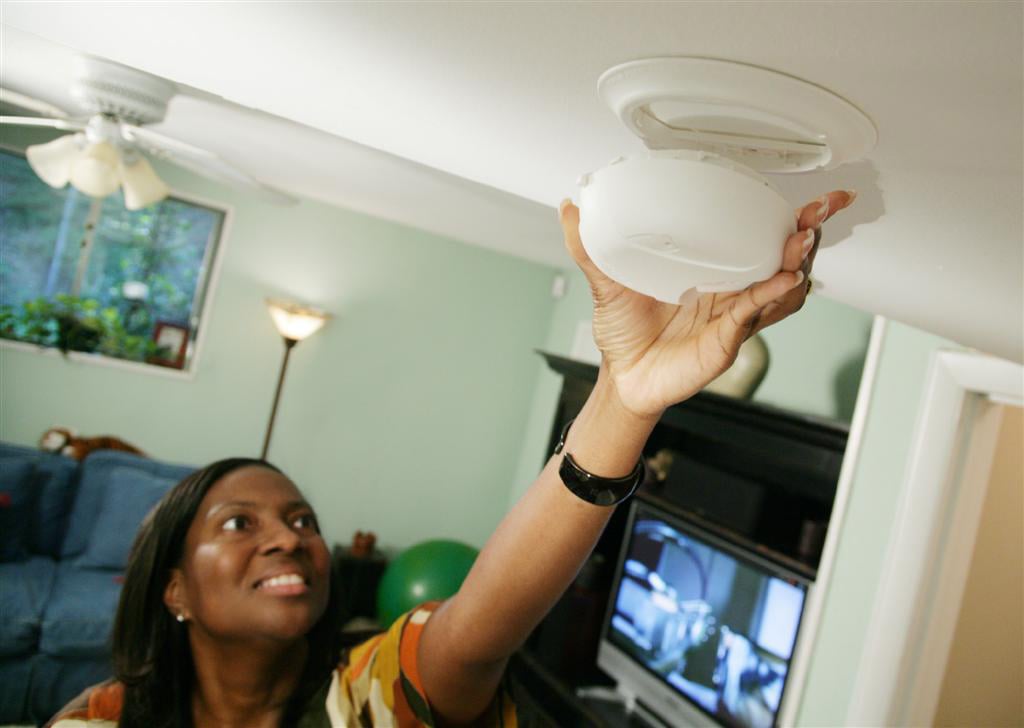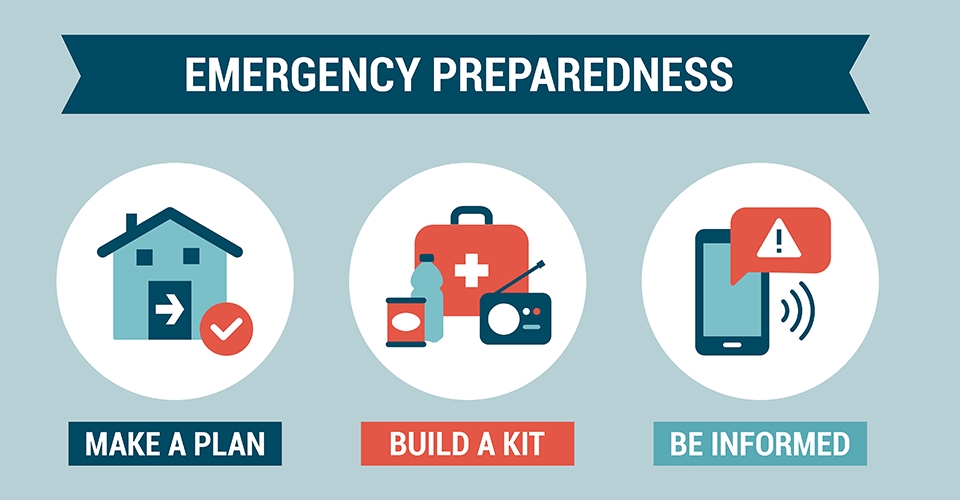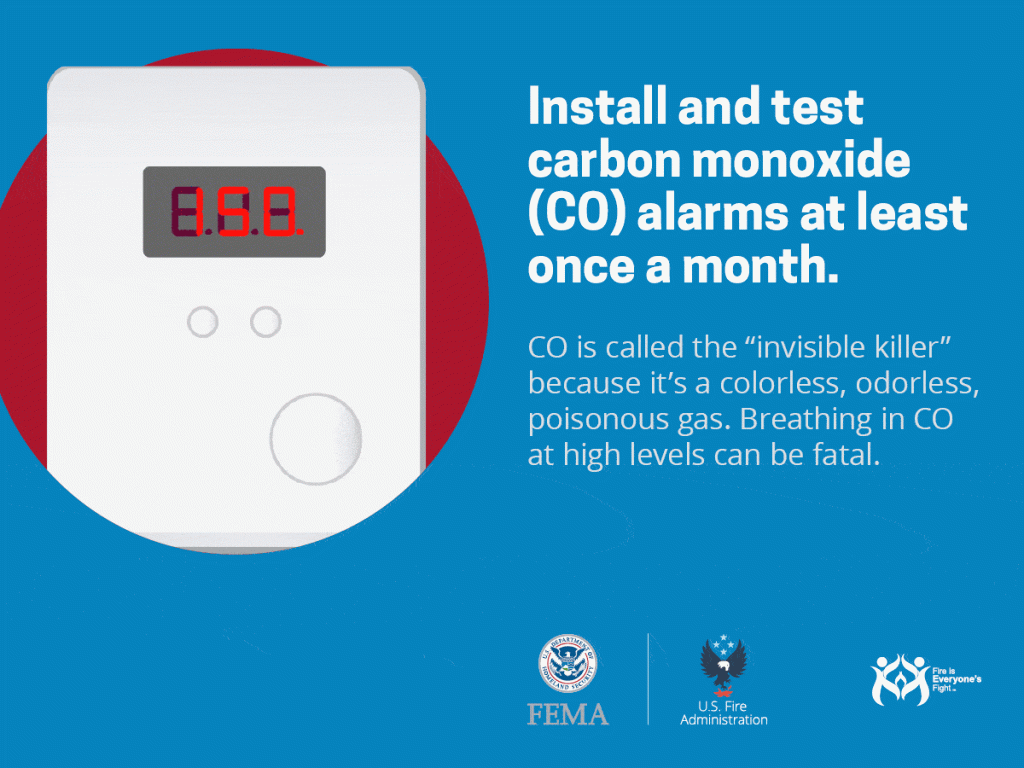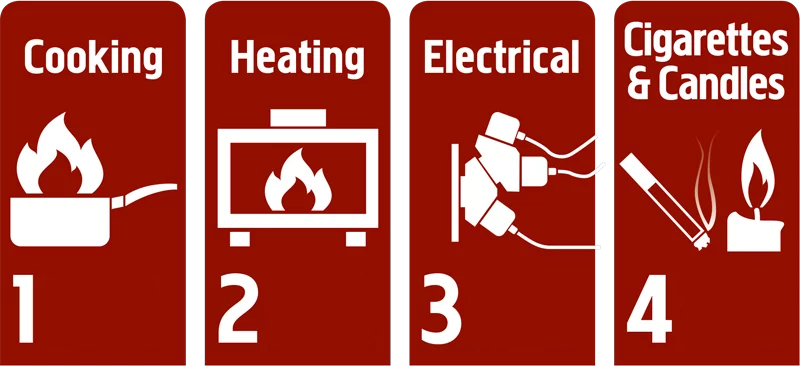Resources
Fire Safety
North Lenoir Fire & Rescue, in conjunction with local and national partners, is committed to making our community safer by educating our citizens about how and why fires start. Here, you’ll find some helpful information to help keep you, your family, and your neighbors safe from fire-related hazards.
Leading Causes of Home Fires
The leading causes of home fires in the United States are:
– Cooking
– Heating
– Electrical
– Smoking
– Candles
Fire/Life Safety Equipment
Life safety equipment, when provided and properly maintained, saves lives!
Smoke Alarms
Smoke alarms save lives. Smoke alarms that are properly installed and maintained play a vital role in reducing fire deaths and injuries. If there is a fire in your home, smoke spreads fast and you need smoke alarms to give you time to get out. Learn more…
Carbon Monoxide Alarms
Although the popularity of carbon monoxide (CO) alarms has been growing in recent years, it cannot be assumed that everyone is familiar with the hazards of carbon monoxide poisoning in the home. Learn more…
Fire Extinguishers
A portable fire extinguisher can save lives and property by putting out a small fire or containing it until the fire department arrives. Learn more…
Fire Sprinklers
Home fire sprinklers can dramatically reduce the heat, flames, and smoke produced in a fire. Properly installed and maintained fire sprinklers help save lives. Learn more…

Being Prepared for Emergencies
The best time to act on an emergency is before it happens. Being prepared can be the difference between life and death.
Escape Planning
Your ability to get out of your home during a fire depends on advance warning from smoke alarms and advance planning. Fire can spread rapidly through your home, leaving you as little as one or two minutes to escape safely once the smoke alarm sounds. Learn more…
Emergency Preparedness
In a disaster, local officials and first responders cannot reach everyone immediately. Help may not arrive for hours or days. You and members of your community need to be prepared ahead of time. Learn more…
Emergency Supplies Kit
By taking the time to create an emergency supplies kit, your family will be prepared in the event of a disaster. The kit also helps children feel more secure knowing it is there in case of an emergency. Learn more…

Carbon Monoxide
Often called the invisible killer, carbon monoxide is an odorless, colorless gas created when fuels (such as gasoline, wood, coal, natural gas, propane, oil, and methane) burn incompletely. In the home, heating and cooking equipment that burn fuel are potential sources of carbon monoxide. Vehicles or generators running in an attached garage can also produce dangerous levels of carbon monoxide.
- – CO alarms should be installed in a central location outside each sleeping area and on every level of the home and in other locations where required by applicable laws, codes or standards. For the best protection, interconnect all CO alarms throughout the home. When one sounds, they all sound.
- – Follow the manufacturer’s instructions for placement and mounting height.
- – Choose a CO alarm that has the label of a recognized testing laboratory.
- – Call your local fire department’s non-emergency number to find out what number to call if the CO alarm sounds.
- – Test CO alarms at least once a month; replace them according to the manufacturer’s instructions.
- – If the audible trouble signal sounds, check for low batteries. If the battery is low, replace it. If it still sounds, call the fire department.
- – If the CO alarm sounds, immediately move to a fresh air location outdoors or by an open window or door. Make sure everyone inside the home is accounted for. Call for help from a fresh air location and stay there until emergency personnel.
- – If you need to warm a vehicle, remove it from the garage immediately after starting it. Do not run a vehicle or other fueled engine or motor indoors, even if garage doors are open. Make sure the exhaust pipe of a running vehicle is not covered with snow.
- – During and after a snowstorm, make sure vents for the dryer, furnace, stove, and fireplace are clear of snow build-up.
- – A generator should be used in a well-ventilated location outdoors away from windows, doors and vent openings.
- – Gas or charcoal grills can produce CO — only use outside.

Symptoms of CO poisoning
CO enters the body through breathing. CO poisoning can be confused with flu symptoms, food poisoning and other illnesses. Some symptoms include shortness of breath, nausea, dizziness, light headedness or headaches. High levels of CO can be fatal, causing death within minutes.
The concentration of CO, measured in parts per million (ppm) is a determining factor in the symptoms for an average, healthy adult.
